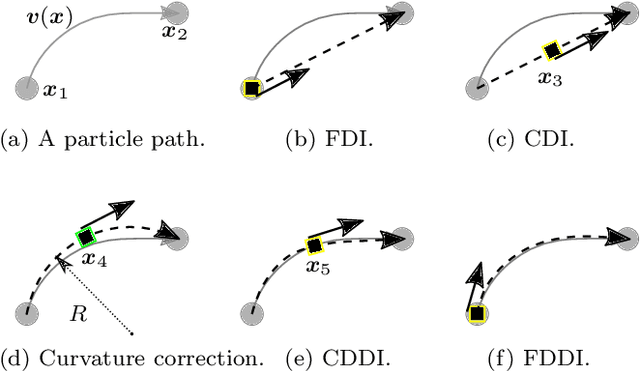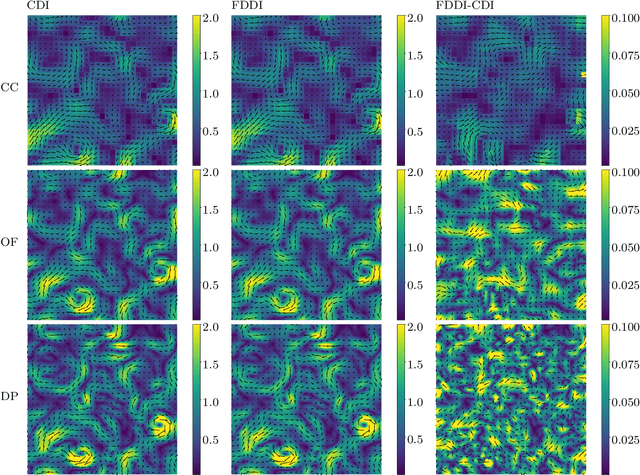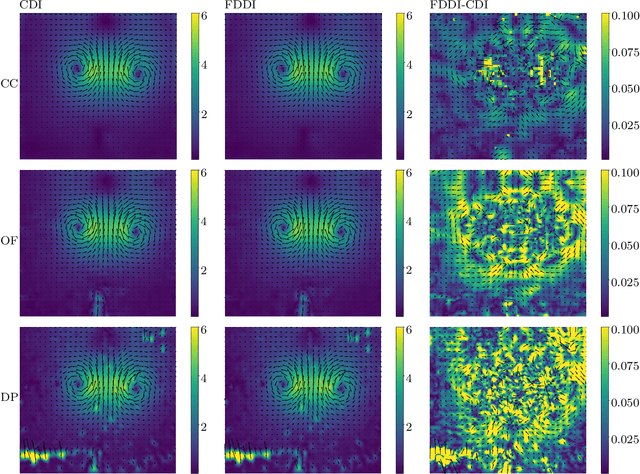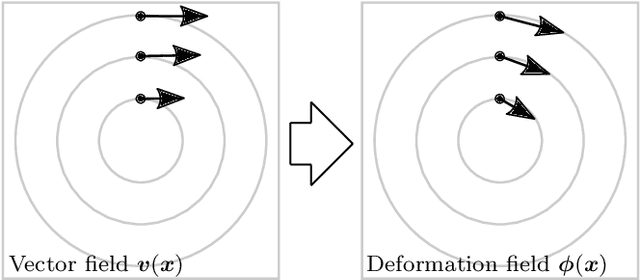Shuang Mei
Diffeomorphic Particle Image Velocimetry
Aug 17, 2021



Abstract:The existing particle image velocimetry (PIV) do not consider the curvature effect of the non-straight particle trajectory, because it seems to be impossible to obtain the curvature information from a pair of particle images. As a result, the computed vector underestimates the real velocity due to the straight-line approximation, that further causes a systematic error for the PIV instrument. In this work, the particle curved trajectory between two recordings is firstly explained with the streamline segment of a steady flow (diffeomorphic transformation) instead of a single vector, and this idea is termed as diffeomorphic PIV. Specifically, a deformation field is introduced to describe the particle displacement, i.e., we try to find the optimal velocity field, of which the corresponding deformation vector field agrees with the particle displacement. Because the variation of the deformation function can be approximated with the variation of the velocity function, the diffeomorphic PIV can be implemented as iterative PIV. That says, the diffeomorphic PIV warps the images with deformation vector field instead of the velocity, and keeps the rest as same as iterative PIVs. Two diffeomorphic deformation schemes -- forward diffeomorphic deformation interrogation (FDDI) and central diffeomorphic deformation interrogation (CDDI) -- are proposed. Tested on synthetic images, the FDDI achieves significant accuracy improvement across different one-pass displacement estimators (cross-correlation, optical flow, deep learning flow). Besides, the results on three real PIV image pairs demonstrate the non-negligible curvature effect for CDI-based PIV, and our FDDI provides larger velocity estimation (more accurate) in the fast curvy streamline areas. The accuracy improvement of the combination of FDDI and accurate dense estimator means that our diffeomorphic PIV paves a new way for complex flow measurement.
 Add to Chrome
Add to Chrome Add to Firefox
Add to Firefox Add to Edge
Add to Edge